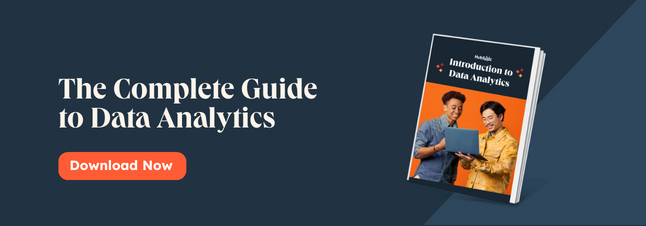The global market for big data analytics is forecasted to reach more than $68 billion by 2025, according to Statista. Another report shows the volume of data generated, captured, copied, and consumed worldwide is expected to top 181 zettabytes that same year.
Given the rising volume of data, ensuring data quality is a persistent issue for organizations looking to leverage their data to drive decision making, and its impact is only increasing. A Statista poll found that 41 percent of businesses surveyed in the U.S. and Europe listed a lack of analytical skills among employees as the top challenge to using data to drive business value in 2021.
To achieve greater confidence in their data sets and stay competitive in the marketplace, businesses turn to data profiling as a key piece of their data management strategy.
This post will review what data profiling is, examples of data profiling, its benefits, its types, its techniques, and tools available to implement data profiling.
Download Now: Introduction to Data Analytics [Free Guide]
What is data profiling?
Data profiling is an assessment of data that uses a combination of tools, algorithms, and business rules to create a high-level report of the data's condition. The purpose of data profiling is to uncover inconsistencies, inaccuracies, and missing data so that a data engineer can investigate and correct the source.
Data profiling reports are usually visualizations and graphs along with tables to display relevant metrics, such as the degree of duplication in the data set.
.webp?width=650&height=338&name=Data%20Profiling%20(V4).webp)
Data profiling is not only intended for troubleshooting risks to data quality and data integrity. It can also be a key process of discovery for analysts to uncover the structure, content, and relationships between different data sources.
In short, data profiling builds a profile of the state and quality of the data. The information collected to build this profile includes metadata such as data type and length, dependencies between tables, and statistics generated about the data set. Data profiling also includes tagging the data set, such as assigning keywords and categories to speed future analysis and make the data searchable.
Now let's expand the definition of data profiling with a pair of examples.
Data Profiling Examples
Data profiling has many use cases within organizations seeking to better understand and maintain their data. Let's review two examples below.
Mergers and Acquisitions
In this example, your company merges with a competitor. You now have access to an entirely new wealth of data to find new insights and discover new customers. However, you first need to integrate this data with your existing data.
Data profiling provides a high-level overview of the new data assets available and their dependencies. Then, data profiling identifies duplicate data between your two systems and shows where the new data's format differs so the data team can work to standardize. Now, the data is ready to be cleansed and merged into a single source of truth.
Data Warehousing
When businesses create a data warehouse, they are trying to collect data from multiple sources and store it in a standardized format where it's easily accessible for analysis. However, if the quality of data is poor, gathering it all into one location does not solve the larger issue. Bad data leads to bad decision making.
Incorporating data profiling into the data warehouse workflow provides a check against low-quality data. As information is collected — typically in an ETL process — data profiling can be used to validate the data's integrity and compliance with data rules before or during the intake process. Now your organization has centralized data you know can be relied on for informed decisions.
This video from dataladder provides an example of data profiling with a sample dataset:
Benefits of Data Profiling
Beyond improving data quality and visibility, data profiling offers concrete benefits for organizations, including the following:
Improved Confidence in Data
Data profiling helps data engineers and analysts identify issues and correct them. This process enables greater confidence in conclusions drawn from these data sets. Data profiling also allows the team to identify any larger causes of these issues so they can correct them during the data collection process.
Searchability
Engineers improve the searchability of their data sets by tagging them with keywords, descriptions, and categories for easier discovery. This streamlines future analyses that incorporate this data and also provides access to non-technical users that can now query data sets with search terms.
Predictive Decision Making
Advanced data use cases such as artificial intelligence and machine learning rely on standardized and properly formatted data to power their algorithms. Data profiling allows engineers to better enforce standards. It also validates data sets for accuracy to ensure these technologies aren't drawing erroneous conclusions.
Next, let's examine the types of data profiling available.
Data Profiling Types
Data profiling has three types: structure discovery, content discovery, and relationship discovery. Let's review each of these in more detail.
Structure Discovery
Structure discovery is the process of validating that data is consistent and properly formatted. It is sometimes also referred to as structure analysis.
A typical method used for structure discovery is pattern matching, in which data engineers test records against known patterns for data types. For example, pattern matching may scan a column of email addresses to confirm they all contain "@" and end in a domain suffix (e.g. .com).
Structure discovery also calculates basic statistics around numerical data such as mean, median, mode, and standard deviation. These statistics are not only useful metadata to have for future analysis but can indicate data validity. For example, you may spot an unusually high average or outlier to investigate further.
Relationship Discovery
Relationship discovery broadens the scope beyond the data values to catalog the links between records and tables. This can include references within a table — such as a cell value populated by calculating other cell values — or references between tables and data sets — such as foreign and primary keys.
These connections are crucial to track and catalog so that data integrity is maintained if the data set is imported or duplicated to a different database, for example. Or, if data is sampled, then calculated values should be persisted in case their arguments aren't included in the cross section.
Content Discovery
During content discovery, engineers turn their attention back to the data values to identify which records have errors. Content discovery looks for obvious issues such as missing values and more nuanced problems such as incorrect or ambiguous data.
For example, some records may be missing a street address. Others may have a street address, but some spell out numeric values (Tenth Street) and others keep them as numerals (10th Street). This may seem innocuous, but if you need to ship to a customer and then find out the carrier only accepts numeric formats, improper data is now impeding your business.
In another example, some state values are abbreviated (NC) and some are spelled out (North Carolina). If the data engineer is not aware of this when asked to pull a list of customers that are based in North Carolina for an ad campaign, then they may end up only querying with one of these values and providing an incomplete data set. Improper data is now directly affecting business outcomes.
This video from BI Consulting Pro reviews the definition of data profiling and then walks through some hands-on methods for profiling in Power BI:
Data Profiling Techniques
In addition to types, data profiling has techniques that are used across these different methods to validate data, track dependencies, and more. Here are some of the more commonly used ones:
Column Profiling
Column profiling is a method that scans through columns to quantify the number of times a value appears in each column. This information can be useful for identifying patterns and frequent values.
Cross-Column Profiling
Cross-column profiling is divided into two operations: key analysis and dependency analysis.
Key analysis searches for possible primary keys within columns. Dependency analysis searches for relationships or structures within a data set. Together, these processes reveal connections among cells in the same table.
Cross-Table Profiling
Cross-table profiling relies on foreign key analysis to identify relations between columns in different tables. This provides deeper visibility into dependencies and highlights data sets that can be mapped together for faster analysis. Cross-table profiling also identifies stray data and semantic or syntactic differences between related data sets.
Data Rule Validation
Data rule validation cross-checks that data values and tables conform with established standards for data formatting and storage. The results of data validation tests show engineers where data integrity can be improved.
Now that you understand the data profiling types and techniques available, let's examine some of the data profiling tools available to automate these processes.
Data Profiling Tools
- Informatica Data Quality
- Talend Open Studio
- Aggregate Profiler
- DataFlux Data Management Server
1. Informatica Data Quality
Price: Pricing available on request
-1.webp?width=650&height=325&name=Data%20Profiling%20(V4)-1.webp)
Informatica Data Quality is a data profiling and data quality tool that works across on-premise and cloud-based systems. The tool uses AI-driven insights to automate analysis and discovery of data to identify dependencies and detect issues. Data Quality also supports transformations to standardize, validate, deduplicate, and consolidate data sets.
The tool is highly customizable, allowing users to define exceptions to established data quality rules to fulfill specialized use cases or ad hoc analyses.
2. Talend Open Studio
Price: Free with paid plans available
-2.webp?width=650&height=366&name=Data%20Profiling%20(V4)-2.webp)
Talend Open Studio supports data profiling through its data quality tool, which combines the capabilities of a data profiler, data explorer, pattern manager, and metadata manager into one.
Open Studio analyzes the structure of data sources and stores descriptions of the metadata in a repository for future queries. It also supports rule validations with both regular expressions and SQL patterns, ensuring the value of even complex data types can be measured against standards.
3. Aggregate Profiler
Price: Free
-3.webp?width=650&height=494&name=Data%20Profiling%20(V4)-3.webp)
Aggregate Profiler from Arrah Technology is an open-source data quality and data preparation tool. Aggregate Profiler supports profiling for data in RDBMS, XML, XLS, and flat files, and the tool integrates with Teiid, MySQL, Oracle, PostgreSQL, Microsoft Access, and IBM DB2 databases.
It also offers advanced data profiling methods such as metadata discovery, anomaly detection, and pattern matching. In addition, Aggregate Profiler supports many tasks beyond data profiling, including masking, encryption, governance, integration, reporting, and even dummy data creation for testing.
4. DataFlux Data Management Server
Price: Pricing available on request
%20(1).webp?width=650&height=367&name=Data%20Profiling%20(V4)%20(1).webp)
DataFlux Data Management Server from SAS is a data management tool built to scale the capabilities of the DataFlux Data Management Studio. The studio supports merging enterprise data, integrating disparate data sets, and enforcing data quality.
Once these jobs are defined in DataFlux Data Management Studio, they are uploaded to DataFlux Data Management Server to execute. The studio combines data quality, integration, and master data management capabilities.
-1%20(1).webp?width=650&height=325&name=Data%20Profiling%20(V4)-1%20(1).webp)
Improve data-driven decisions with data profiling.
According to IT Chronicles, only 26 percent of companies believe they have achieved a data-driven culture. The challenge for many organizations lies in effectively analyzing their data and having confidence in the results.
Data profiling addresses these issues by checking data for consistency and accuracy before it's analyzed. This information helps engineers proactively solve issues with intake and transformation of data and enables a higher degree of confidence in the conclusions since the data has been validated. Data profiling is a key strategy for building a data-driven business.











